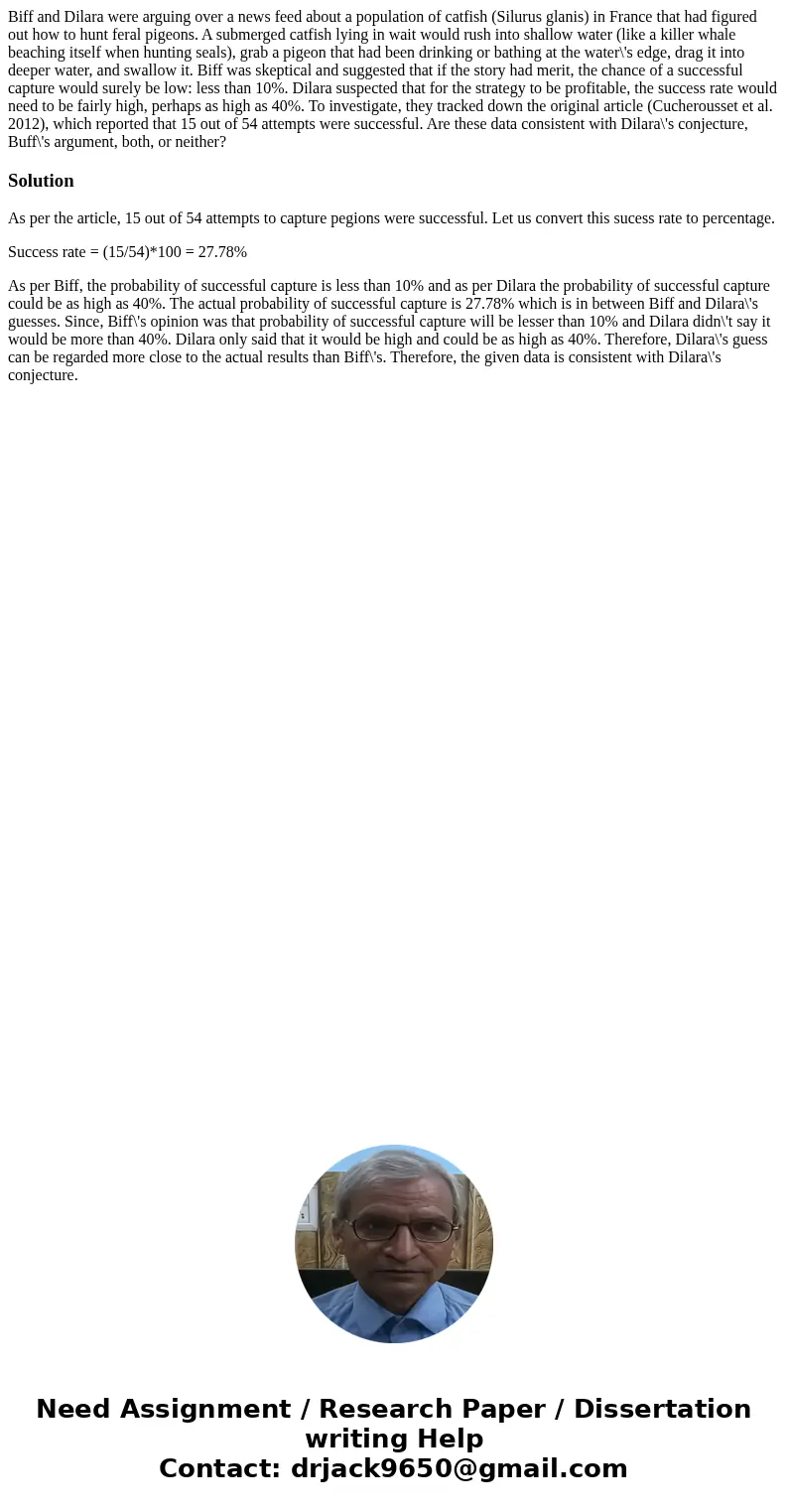Biff and Dilara were arguing over a news feed about a popula
Solution
As per the article, 15 out of 54 attempts to capture pegions were successful. Let us convert this sucess rate to percentage.
Success rate = (15/54)*100 = 27.78%
As per Biff, the probability of successful capture is less than 10% and as per Dilara the probability of successful capture could be as high as 40%. The actual probability of successful capture is 27.78% which is in between Biff and Dilara\'s guesses. Since, Biff\'s opinion was that probability of successful capture will be lesser than 10% and Dilara didn\'t say it would be more than 40%. Dilara only said that it would be high and could be as high as 40%. Therefore, Dilara\'s guess can be regarded more close to the actual results than Biff\'s. Therefore, the given data is consistent with Dilara\'s conjecture.

 Homework Sourse
Homework Sourse